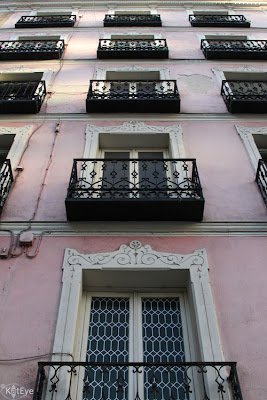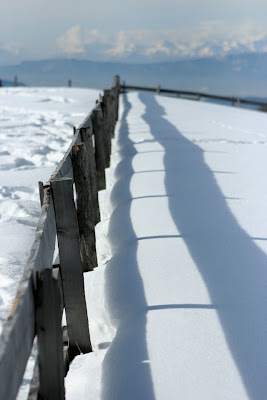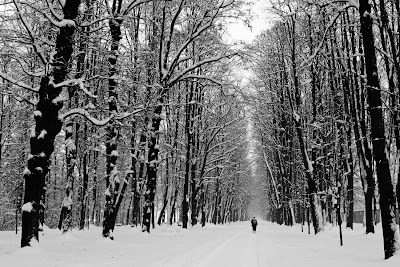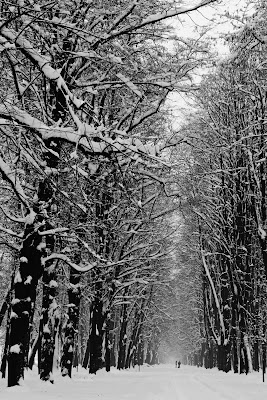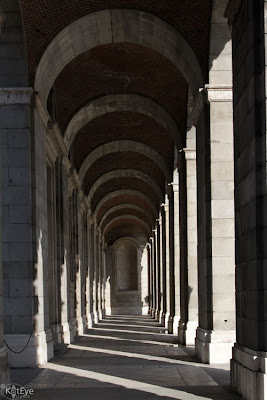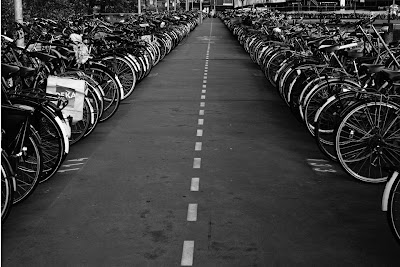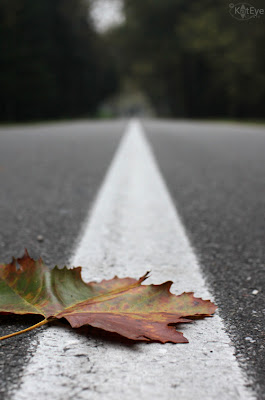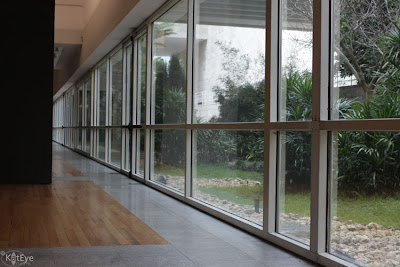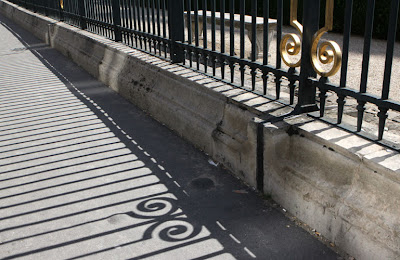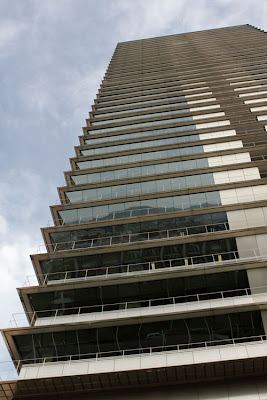Welcome to August’s Exploring with a Camera! This month I’m playing around with Repetition. I’m defining repetition as using repeated elements throughout the frame to tie a composition together. You’ll note the use of “elements” here… Effective repetition is not just about repeating objects, but any design element like object, shape, color, line, form, light and even information, that helps create a cohesive whole in our photographs.
While repetition plays into some past Exploring with a Camera topics, such as Repeating Patterns, Linear Perspective and Group of Three, it is a broader concept than any of these past topics. Let’s explore different ways to use repetition to create interesting photographs.
Repetition of Object
It is easy to focus in on repetition of the physical objects in our photographs, so I’ll start here. The bicycle photograph above, captured on my recent trip to Montana, is a good example of repetition of object. The bicycle is repeated three times, each time with an almost identical shape. It’s also in a very linear composition, with the repetition at regular intervals receding toward the wall.
Contrast this with another image that is primarily repetition of object, below. In this image, the newspaper boxes are the repeated object, yet they are all different sizes and shapes.
The object, peppers, is repeated in the image below, but there is not much else repeating. Color, shape, and orientation of the peppers is all different. This image emphasizes variety over sameness.
With these lucky cats, the effect of repeating the object is much different than the peppers. This image emphasizes sameness over variety. Shape, color and orientation are all repeated, while there is variation only in the size of the objects.
Repetition of Shape
Repetition of object and shape are often intermixed, as in the bicycle example above, but they don’t have to be. In this image, the oval shape is repeated multiple times by different objects: Mirror, bowl, lamp shade and lamp base. I love how the repeated shape works together to make this image feel complete.
Even when there are multiple elements repeating, there is usually a dominant element forming a primary repetition. In the image below, the object of the bicycle is repeated but I see the repetition as primarily of shape due to the framing. All of the circles created by the layered wheels, hubs and chainrings tie this image together.
Repetition of Color
Since color, especially bright color, catches our eye it can be an effective element to repeat. You can pull completely unrelated elements together within the frame through the repetition of color. In this scooter scene found in Sicily, the red ties the scooter, the niche and the potted flowers together into a cohesive whole. It creates a stronger visual relationship between disparate elements than proximity alone.
Repetition of the color blue ties this port scene from Greece together.
The same happens with this image of a row of potted plants in Korkula. The repetition is made stronger by the repeated color along with object.
Repetition of Line
Lines are easily used as elements of repetition, often because our man-made world is made up of regular and repeating lines. In this image, repetition is created not only by the lines of the pillars, but the lines of the shadows and even the lines of the black deposits on the inside of the pillars repeat the outline of the pillar itself.
Repetition of lines can be used to support the primary elements in a photograph. Even though the lines of this staircase are primarily diagonal, the repetition of the lines in the railing and steps work together to echo the diagonal lines.
Here is another example of lines, where the regular repetition of the trees creates lines that echo the converging lines of the path. You can begin to see how Repetition and Linear Perspective are related: Repeat an element regularly into the distance, and you are working with linear perspective.
Repetition of Message
Repetition of message is used in the real world to get important ideas across. This image from San Francisco takes advantage of that, capturing the repeated messages of “danger” and “no parking” along with the repeating elements of object and shape.
You can convey messages in your photographs as well, by repeating elements that all lead to the same conclusion. The image below shouts “LONDON” through the repeating elements of phonebooth, flag and signs.
Repetition of Light
Light is everything in our photographs, and variations in light can become an element on their own for repetition. The warm light of the candles is repeated on the faces of the girls and reflected in the painting, pulling the scene together to tell a story.
Combining Elements
In many of the examples above, you find more than one of the elements repeating. Whenever you combine multiple elements in the repetition, you create emphasis. In this example of the flower pots, there is repetition of not only object, but color, shape, texture and line. This creates a very harmonious image, and the repetition not only ties the elements together but almost becomes the subject of the image itself.
Wow! Did you realize there were so many ways to use repetition to create a cohesive photograph? I didn’t realize it myself, until I started to explore this topic over the last few weeks. It’s been fun to discover how I use repetition in my archive, and to look for opportunities to use repetition as I create new photographs.
Now it’s your turn! Take a look at your archives and then go out and explore the world with repetition in mind. What do you find? Share it with us here!



































